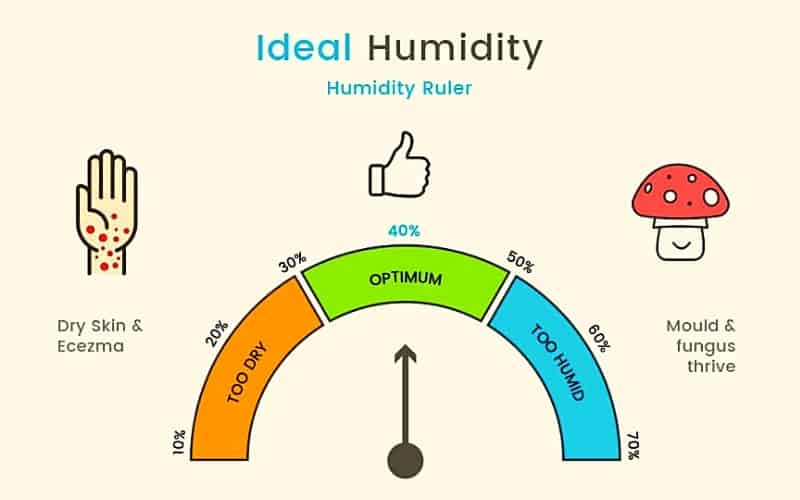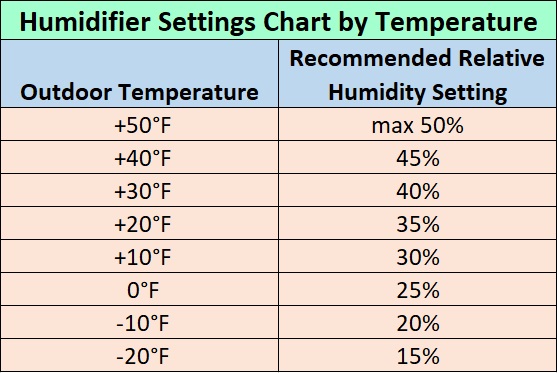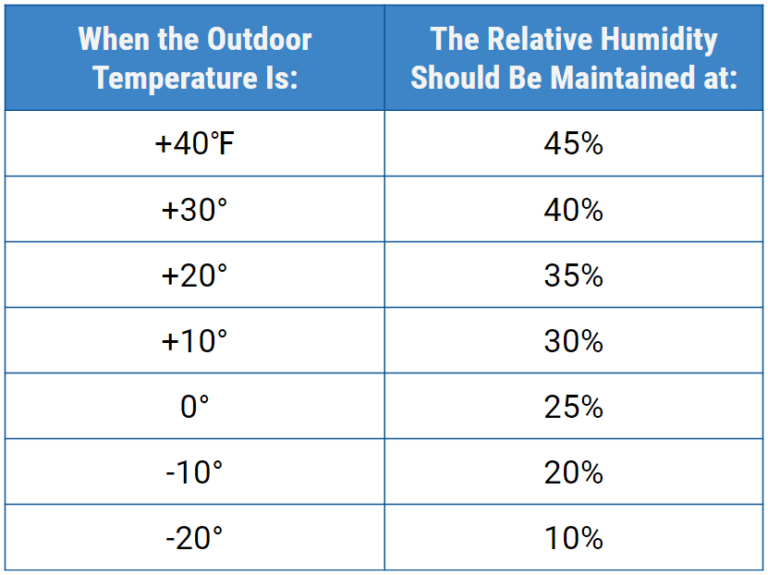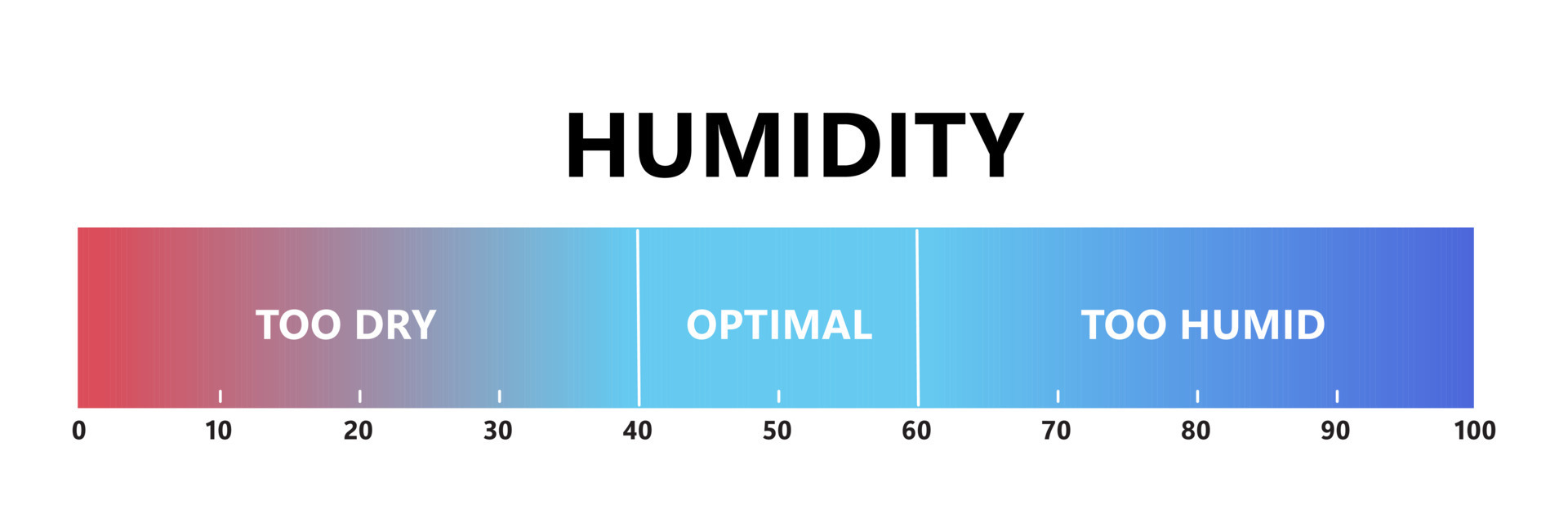What Is The Correct Humidity For A House

Frequently Asked Questions About Home Humidity
What is the ideal humidity level for my house?
The ideal relative humidity for a home typically falls between 30% and 50%. This range offers a balance between comfort, health, and protection of your home's structure and belongings. Keeping humidity within this range helps prevent issues like mold growth, condensation, and the discomfort associated with overly dry or humid air.
Why is maintaining the correct humidity level so important?
Maintaining the right humidity level is crucial for several reasons:
- Health: Too much humidity can promote mold and mildew growth, which can trigger allergies and asthma. Dry air can exacerbate respiratory issues and dry out skin and nasal passages, increasing susceptibility to infections.
- Comfort: Humidity significantly impacts how we perceive temperature. High humidity makes the air feel hotter than it actually is, while low humidity can make the air feel colder and drier.
- Preservation of your Home: Excessive humidity can lead to condensation on windows and walls, fostering mold and rot. It can also damage wooden furniture, flooring, and even structural components. Dry air, conversely, can cause wood to shrink, crack, and warp.
- Energy Efficiency: Properly controlled humidity can make your heating and cooling systems work more efficiently. When the air is dry, you may feel the need to crank up the heat. Similarly, high humidity can make air conditioning less effective.
How do I measure the humidity level in my house?
You can easily measure humidity using a device called a hygrometer or a humidity meter. These devices are readily available at most hardware stores and online retailers. Some thermostats also have built-in hygrometers.
To get an accurate reading, place the hygrometer away from direct sunlight, drafts, and areas with high moisture, such as bathrooms and kitchens, unless you are specifically trying to measure the humidity *in* those areas. Monitor the humidity levels in different parts of your home, especially in areas prone to moisture problems.
What happens if the humidity in my house is too high?
High humidity, generally above 60%, can lead to a variety of problems. Common signs of high humidity include:
- Condensation on windows, mirrors, and walls
- Musty odors
- Mold or mildew growth, especially in bathrooms, kitchens, and basements
- Water stains on walls or ceilings
- Increased allergy symptoms
If you notice any of these signs, take steps to reduce the humidity level. Here's how:
- Use Dehumidifiers: Dehumidifiers remove excess moisture from the air. Place them in areas with high humidity, such as basements and bathrooms.
- Improve Ventilation: Ensure proper ventilation in bathrooms and kitchens by using exhaust fans when showering, bathing, or cooking.
- Fix Leaks: Repair any leaks in your roof, plumbing, or foundation to prevent water from entering your home.
- Properly Vent Appliances: Ensure that clothes dryers and other appliances are properly vented to the outside.
- Increase Air Circulation: Use fans to circulate air and prevent moisture from building up.
- Consider a Whole-House Dehumidifier: For persistent humidity problems, a whole-house dehumidifier installed as part of your HVAC system may be the best solution.
What happens if the humidity in my house is too low?
Low humidity, typically below 30%, can also cause several issues. Signs of low humidity include:
- Dry Skin and Itchy Eyes
- Dry Nasal Passages and Sore Throats
- Static Electricity
- Cracking Wood Furniture and Flooring
- Increased Susceptibility to Respiratory Infections
To increase the humidity level in your home, consider these solutions:
- Use Humidifiers: Humidifiers add moisture to the air. You can use portable humidifiers in individual rooms or a whole-house humidifier connected to your HVAC system.
- Boil Water: Simmering water on the stove can add moisture to the air.
- Take Longer Showers: Leaving the bathroom door open after a shower can allow moisture to escape and humidify the surrounding area.
- Add Houseplants: Plants release moisture into the air through transpiration.
- Air Dry Clothes: Instead of using a dryer, air dry your clothes indoors to increase humidity.
Does the ideal humidity level change depending on the season?
Yes, the ideal humidity level can vary slightly depending on the season. During the winter months, when outdoor temperatures are low, it's generally recommended to keep the humidity level on the lower end of the range (around 30-40%). This is because cold air holds less moisture, and higher humidity levels can lead to condensation on windows and other surfaces, potentially causing damage.
During the summer months, when outdoor temperatures are higher, you can aim for the upper end of the ideal range (around 40-50%). However, it's important to avoid exceeding 50% to prevent mold growth and other humidity-related problems. The key is to monitor the humidity level regularly and adjust your humidification or dehumidification methods as needed to maintain a comfortable and healthy indoor environment year-round.
How do I choose between a portable humidifier/dehumidifier and a whole-house system?
The choice between a portable and whole-house system depends on your specific needs and the severity of your humidity issues. Here’s a breakdown to help you decide:
Portable Humidifiers/Dehumidifiers:
- Best for: Addressing humidity problems in a single room or small area.
- Pros:
- Lower Initial Cost: Portable units are generally less expensive than whole-house systems.
- Easy to Install: They require no professional installation; simply plug them in.
- Flexibility: You can move them to different rooms as needed.
- Cons:
- Limited Coverage: They only affect the humidity in the immediate area.
- Maintenance: Requires regular filling (humidifiers) or emptying (dehumidifiers).
- Noise: Some models can be noisy.
Whole-House Humidifiers/Dehumidifiers:
- Best for: Addressing humidity problems throughout your entire home.
- Pros:
- Comprehensive Coverage: They maintain consistent humidity levels throughout the entire house.
- Convenience: They operate automatically and require less frequent maintenance.
- Efficiency: They can be more energy-efficient for whole-house humidity control.
- Cons:
- Higher Initial Cost: Whole-house systems are more expensive to purchase and install.
- Professional Installation: Requires professional installation by an HVAC technician.
- Less Flexibility: They cannot be moved to different locations.
When to choose a portable unit: If you only have humidity issues in a specific room (e.g., a damp basement or a dry bedroom), a portable unit is a cost-effective solution. Also, consider portable units if you rent your home or aren't ready to invest in a whole-house system.
When to choose a whole-house system: If you have consistent humidity problems throughout your entire home, a whole-house system is a better long-term solution. It offers more consistent and convenient humidity control, improving the overall comfort and health of your home.










